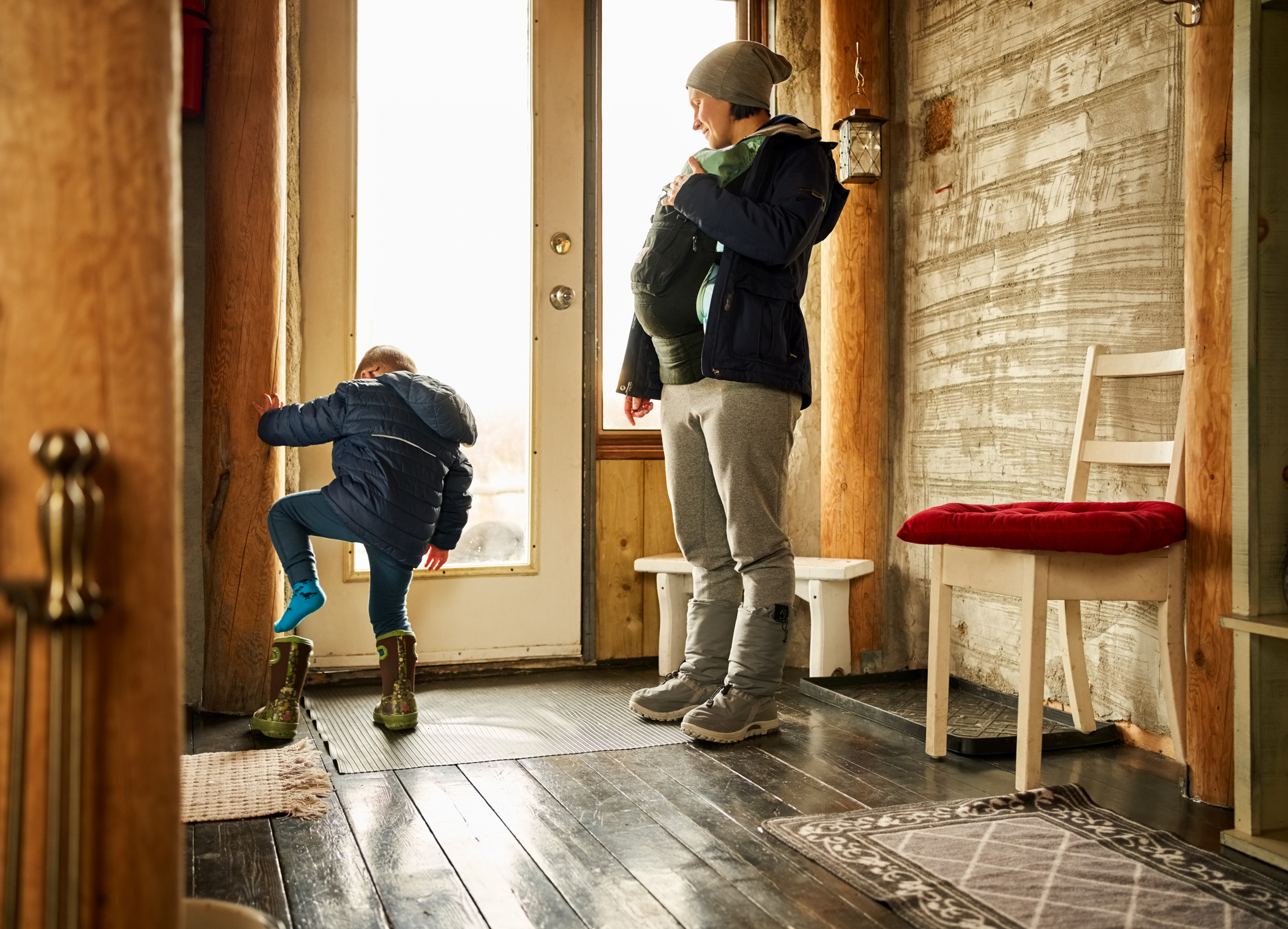In snow, cold, and freezing rain, local municipalities use salt and other melting agents to make our walkways and roadways safer. Because of this, it’s very common to track road salt into your home, office, or car in the winter months.
Left untreated, corrosive road salt may stain your shoes/boots and damage your flooring. Read on to learn how to care for your floors during road salt season.
First, Why Is Salt Used on Icy Roads?
Road salt melts ice and snow by lowering its freezing point. It also increases surface friction, helping motorists enjoy better traction. Studies show that for every 10% increase in friction, there’s a 20% decrease in accidents. In much of the US, salt is the most cost-effective way for local governments to lower the danger of winter driving.
When tracked into your home or car, road salt corrodes, stains, and causes damage to any number of household surfaces. Salt stains are usually noticed as a rough circle or oval with a thick, dry outer ring. The stain will be distinctly white when salt crystalizes on your carpets or other floorings, providing an almost bleached effect.
But cold-climate homeowners, luckily, have some tools at their disposal.
Removing Salt Stains from All Your Surfaces
In most cases, you’ll want to treat salt stains using liquid dish soap or a solution of water and vinegar. The vinegar or soap will help break up the salt and remove overall staining.
How to Get Salt Stains out of Shoes and Boots
Let’s start with one of the most common salt spreaders—your shoes or boots. Walking on icy sidewalks, parking lots, and your own driveway will cover your shoes and boots in ice-melting salt. If the salt is left on your footwear, it will stain and begin to break down your footwear.
Knowing how to properly clean your shoes after they’ve gotten covered in salt will also help preserve your flooring.
Follow these steps to preserve your shoes and boots:
- Use a soft, damp cloth to remove large chunks and as much residue as possible. You risk scratching footwear, especially leather, if you use a coarse material. For rubber-coated shoes and boots, you’ll be able to clean more aggressively than leather shoes.
- Alternate between using a solution of equal parts vinegar and water on a rag and a damp cloth with only water to remove any residue from the initial wiping.
Let your footwear air-dry. Using sources of direct heat, like hair dryers, can cause damage.
How to Remove Salt Stains from Car Carpet
Before any salt can reach your home, it will get tracked into your car. Here’s how to get road salt stains out of vehicle carpets:
- Vacuum up any chunks of salt and as much debris as possible.
- Use a combination of vinegar and water or dish soap and water, and lightly apply with a spray bottle to cover the stain.
- Once the stain is covered, use a cloth or rag to dab the stain out of the carpet. Try not to rub, as the vehicle carpeting could come loose or be damaged with rubbing.
Use a towel to soak up any excess cleaning solution. If reasonable, leave your doors open to allow the carpet to air-dry.
How to Clean Road Salt from a Garage Floor
The corrosive properties of road salt can even damage your concrete garage floor.
When you notice salt or just a stain:
- Cover the stained area in water using a bucket, spray bottle, or another similar tool.
- Next, make a solution of water and either vinegar, soap, or detergent. Dish soap has a lower freezing point than vinegar and water, so in the coldest points of winter, you might consider soap.
- Use a coarse brush or broom to apply your solution to the stained area. Apply a generous amount to cover the stains, and then continue scrubbing until the stains start to lift and break up.
- Use towels or a mop to soak up all excess water. Any water left behind could freeze if the temperature drops low enough.
Removing Road Salt Stains from Hard Interior Floors
The only difference for hard internal floors (wood, tile, vinyl) from the garage floor instructions above is that you’ll probably want to use a softer mop to avoid scratches.
To prevent salt damage to your home’s flooring, remove footwear as soon as possible once you enter your home.
For rugs and carpeting stained by road salt, you’ll want to remove any visible chunks of salt with a vacuum or pick them up with a gloved hand—you don’t want to expose your skin directly to road salt. Next, use a cloth or rag with a cleaning solution (water + vinegar, dish soap, or detergent) to dab out the stain. Lastly, use a towel to dry up excess moisture. If the stain is on a rug, you might even just be able to put it in your washing machines once you’ve gotten most of the stain and salt off the surface. Check the rug’s care label prior to washing.
Floor Cleaning Made Easy
If you live in an area where salt trucks are a regular sight, don’t worry, we’ve got your back. The Cleaning Authority offers various services, from regular home cleaning and sanitization to one-time cleanings, to keep your floors clean. Request a free estimate online or call (888) 658-0659.

